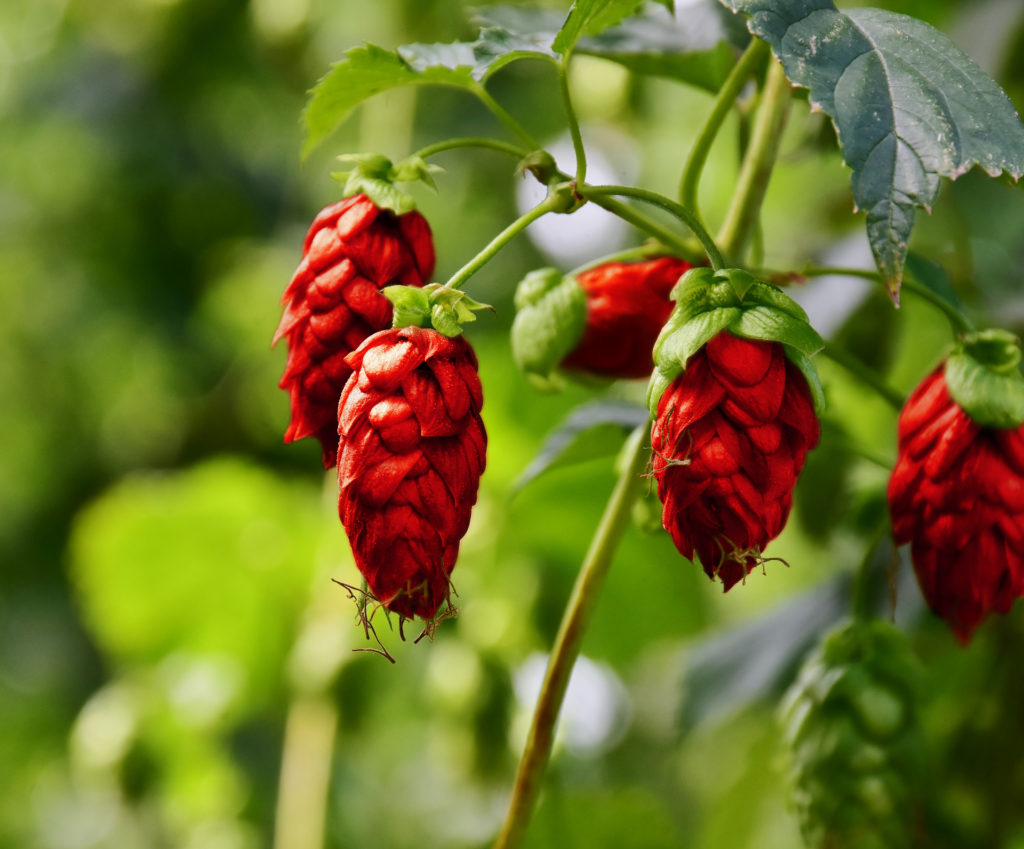Winterbeer Hops

Rarity: Uncommon
Status: Wild and Domesticated
Appearance: Like most hops, the vine can grow rather long. Without man-made support such as a trellis, the vine tends to grow along the ground or uses bushes or trees as supports if they are growing nearby. Vines lengths can reach up to 30 feet. When matured the hop plant is a dull greenish-brown and rather unassuming. The hops themselves, a cone-shaped flower, grow in a slightly brighter green color until they are ripe and ready for picking. As the weather grows colder the hops grow dimmer and dimmer into a pale brown, which some may mistake as a dying color. It is not until a snowfall that the hops flower turn a bright berry red, signaling they are ripe and ready for harvest. The leaves of the plants are somewhat large and have three points. The leaves and flowers grow along the vine stem itself which is mostly flexible, but more rigid when supporting flowers as those branches stick up straight into the air if the vine is growing along the ground.
Life Cycle: The Winterbeer Hop plant reproduces via pollen in the Spring season. Leftover surviving hop flowers, called cones, are fertilized on female plants by male plants and produce seeds within the cone that then drop and spread for reproduction / Seeds are matured in the Spring season and dispursed from the female plant. For Winterbeer Hop farmers this is also the time to manually plant the vine. Like many other hops plants, the vine needs around 120 days of warmer weather in order to fully mature and begin producing flowers. The coneflowers mature in the early or late Fall season, depending on the vine’s initial planting date. While the greenish-brown hops can be used to make beer, the product is mediocre compared to beer made from the fully ripened red hops flowers which can be found after a snowfall in Winter. These red hops only last a couple of days after initial snowfall before they begin to lose their color and quality. The Winterbeer Hops plant, like other hops, is a perennial plant and can continue to grow year after year. Its most common cause of death is being strangled of nutrients from nearby plants and overwatering.
Habitat: The Winterbeer Hops plant prefers dryer climates with moderate summers and cold winters. They are frost tolerant and need snowfall inorder to properly mature and reproduce. Currently can only be found in Winhem
Uses: The Winterbeer Hops plant really only has one use and that is to make Winterbeer, a specific type of beer made from the snowfall ripened hops flowers of the vine.
0 Comments